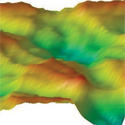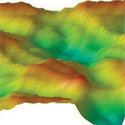Thrown out of the nest
Electrons in a material can collectively organize into ordered states at low temperatures. One such state is a charge-density wave (CDW), which is a periodic spatial modulation of the electronic charge. It is commonly believed that the phenomenon is tied to Fermi-surface nesting, that is, if it is possible to match segments of the Fermi surface upon translation by a fixed vector , then the charge-density wave that is created has a spatial periodicity . But because this picture fails even for minor deviations from perfect nesting, it is questionable if this is the mechanism for CDWs forming in some materials.
In a Rapid Communication appearing in Physical Review B, Matteo Calandra and Francesco Mauri from the Institut de Minéralogie et de Physique des Milieux Condensés in France and Igor Mazin of the Naval Research Laboratory in the US perform density-functional-theory calculations on a prototypical CDW material: layered . Calandra et al. contrast calculations for a bilayer and a monolayer of to find a different periodicity for the CDW in each case, which rules out Fermi-surface nesting as the cause. In this textbook example of CDW-forming material, one would have expected better nesting for the purely two-dimensional Fermi surface of the monolayer, and consequently the same ordering vector. Instead, they predict that an enhanced electron-phonon interaction drives the formation of the CDW.
Calandra et al. also find that the different CDW in the monolayer compared to the one in the bulk leads to a dramatic variation in conductivity, similar to what is seen in experiments. – Alex Klironomos





